Once upon a time, the Okayama (岡山) plain was an inland sea called Kibi no Anaumi, which was surrounded by the powerful province of Kibi. It was a time of belligerent princes, carnivorous cormorants, eye-piercing arrows, shape-shifting ogres… or was it? At the heart of the action is Kibiji (吉備路), the area between northwestern Okayama and Soja (総社), where you can relive the legend of Momotaro and Ura through many sacred, historical, and archaeological sites. Most enticingly, a dedicated bicycle path (自転車道, jitenshado) leads the way.
Since May 2018, the legend of the peach boy Momotaro (桃太郎) in Okayama is officially part of Japanese heritage folklore. You might know the folk tale, but the true story is still a mystery to most of us. Some say the boy was born out of a peach, but the more plausible tale is that Momotaro was originally Prince Isaserihiko of the powerful Yamato clan, who lived during the Yayoi period (c. 300 BC-AD 300) of the prehistoric Iron Age.
Discover the Legend of Momotaro and Ura
As the story goes, young Isaserihiko was a highly skilled archer. So in order to win a wager with the bandits who had abducted his sister, he simultaneously shot two arrows that pierced two separate peaches hanging from a tree. Grateful for the protective power of these sweet round fruits, he took the pits back home, planted one, and nourished it into a tree, while he kept the other as a good luck charm. From then on, he became known as Momotaro, with a special affection for Kibi province, where peaches were abundantly cultivated and cherished.
The tale takes a bloody and surreal turn when Momotaro vows to defeat and destroy Ura (温羅), the leader of ogres rumored to kidnap women and children, boil them alive in an iron pot, and eat them in the mountains above Kibi. Momotaro sets off with a dog, a pheasant, and a monkey (as seen in the statue outside Okayama train station, among many other images), and sets up camp on the Kibi plain. During a fierce battle, Momotaro’s and Ura’s arrows collide, until Momotaro finally shoots an arrow that pierces Ura’s left eye. The ogre attempts to flee into the sky in the shape of a red pheasant, but Momotaro just as soon transforms into a hawk to pursue him. Then Ura morphs into a carp and dives into the river, only to be chased and chewed to death by Momotaro in the shape of a cormorant.
The story doesn’t end there and only gets bloodier. But I’ll spare you the gory details for now, because you can discover the rest of the tale for yourself—along with a few historical parallels at certain bloody pulse points—as you cycle across Kibiji.
Link the Legend to the Landscape of Kibiji
Personally, I set out on my bike from central Okayama in the afternoon, so after following the cycling route on narrow paths weaving through local neighborhoods and across farmlands, occasionally pausing along the way, I ended up racing the setting sun westward toward Soja station. It was enough for me to keep the Momotaro legend in mind, imagining myself shapeshifting into various dynamic forms as I cycled across Kibiji’s contemporary topography.
The first destination on my Momotaro journey was Hakusan Shrine (白山神社) in Okayama city’s northern Kobe (首部) district. The tiny sanctuary is tucked away at the top of steep stairs in a residential neighborhood. What’s particularly striking are the two komainu (狛犬) lion dogs guarding the entrance—as if bowing, with tails in the air! Perhaps it’s no coincidence that 首部 is the ancient radical for “head”, because here also lies a burial mound for severed heads… After Ura’s body washed up on shore, this is where Momotaro took his monstrous head and left it exposed on a stake, where it groaned and wailed every night for years.
Honor Divine Origins at Kibitsuhiko Shrine
From there it was a short but interesting ride through hillside alleyways to Bizen-Ichinomiya (備前一宮) station, so-named after the first shrine in the former Bizen territory of Kibi, right around the corner: Kibitsuhiko Shrine (吉備津彦神社).
By this time in the tale, Momotaro is a well-respected Yamato prince and warrior. As the “divine” protector/conqueror of Kibi province, he becomes known as Kibitsuhiko (吉備津彦). Kibitsuhiko Shrine was built among the remnants of his residence, and is one of the two founding sanctuaries of Kibi. The chant to honor the deity (神, kami) of Kibitsuhiko-no-mikoto is homophonous with the five mutually influencing elements of creation: Ki (木, wood) Bi (火, fire) Tsu (土, earth) Ka (金, gold) Mi (水, water).
Already from the entrance, the sanctuary seems to herald a new style. The guardian komainu on either side of the torii are made of rare Bizenyaki (備前焼) pottery instead of stone, with dignified expressions that meet your gaze eye to eye. A walkway traverses a sacred pond, with individual shrines on the two islets of Tsurujima (鶴島) and Kamejima (亀島), where I spotted a heron and several turtles swimming in the water. But most impressive were the two prominent stone garden lanterns, each standing at 11.5 meters tall on six steps.
By the parking lot, there’s even a colorful statue of Momotaro accompanied by a dog and a monkey. But what’s this—among several other members of Kibitsuhiko’s family also enshrined on these grounds, is Kanayamahiko-no-Okami (金山彦大神), the “ancestral deity of mining and the metal industry.”
Could this be a reverence to the ogre Ura? According to another version of the story, Ura once saved a boy named Azo from a bear attack in Mt. Niiyama. Later, Azo and his sister Azohime would visit Ura in his castle, bringing gifts of food such as Kibi dango millet dumplings from their mountain village of Azo no Sato. In return, Ura gave them iron tools for farming and fishing such as hoes, spades, and harpoons that he had forged himself by hand, to bring back to the village. At first skeptical of these new iron tools, the villagers gradually adopted them and learned to work more efficiently. Thus, Ura is also credited with introducing iron-forging techniques to Kibi.
Listen to Ura’s Howling Head at Kibitsu Shrine
From Kibitsuhiko Shrine I rode alongside a rural canal and past snoozing ducks to the nearby Kibitsu Shrine (吉備津神社), also known as Bitchu-ichinomiya (備中一宮). Already from the path, I stopped to admire the main shrine’s famous “Kibitsu-zukuri” style roof gables nestled in a dense hillside forest just across from vast rice paddies.
The worship hall is a national treasure from the Muromachi period, rebuilt in 1425, and enshrines Kibitsuhiko-no-mikoto along with the rest of the Kibi clan. Kibitsu also commemorates the mystical Yaoki Stone (矢置石) where Momotaro placed his arrows just before shooting the arrow that pierced Ura’s eye.
But Kibitsu Shrine was originally built around the ruins of Kayabuki-no-miya, the shrine where Momotaro finally buried Ura’s howling head. As the tale continues, Ura appeared to Momotaro in a dream, explaining that he wasn’t actually a sadistic, cannibalistic ogre, but an exiled prince—and requested that Azohime (who had since become his wife) kindle the fire underneath the iron pot where his severed head was buried deep underground. Through the sound of the steaming cauldron, he would foretell people’s fate. This fire-lighting, pot-boiling ritual called Narukama Shinji (鳴釜神事) is still practiced on site today at Okamaden, should you wish to have your fortune told by the moan of a haunted rice cooker.
Explore the Battlefield at Kibi no Nakayama
At this point, I had the option of detouring from the Kibiji cycling path to explore on foot Kibi no Nakayama (吉備の中山), where Kibitsuhiko/Momotaro originally set up camp to battle Ura’s army. Here lies Nakayama Chausuyama Kofun (中山茶臼山古墳), the 4th century tomb of Kibitsuhiko-no-mikoto, currently maintained and managed by the Imperial Household Agency. It was also here that 9,606 peach pits were excavated from the Yayoi-period Joto-iseki (上東遺跡) ruins, suggesting that peaches have indeed been a treasure to the Kibi region since ancient times.
But I could already see the afternoon shadows getting longer, so I decided to cycle onwards. Besides, I was thoroughly enjoying the quiet ride through the rural plain, spotting a resting heron in a rustling stream, bright orange persimmons ripening on a tree, horses waiting calmly in their stables. Throughout my journey I encountered only one other cyclist, a local on a road bike, forging ahead in the opposite direction around the bend near Bitchu-Takamatsu (備中高松) train station.
Further along, a short walk off the cycling path led to the ruins of Tatetsuki-iseki (楯築遺跡), a popular power spot featuring five standing megaliths that are supposedly the remains of a shield built by Momotaro in his initial battle with Ura.
Eat Carp near a Bloody Red Shore
Nearby was Koikui “carp-eating” Shrine (鯉喰神社), marking the riverside spot where Ura the carp was eaten by Momotaro—either alive in the mouth of a cormorant, or as fresh-sliced sashimi served on a plate. Indeed, Koikui’s goshintai (御神体), an object of worship believed to contain the spirit of a deity, is a knife and cutting board. Enshrined here along with Ura is Kibitsuhiko’s retainer Sasa Morihiko, a.k.a. Saru (the clever monkey)—just as his other two retainers, Inukai Takeru and Tome Tamaomi, were respectively nicknamed Inu (the faithful dog) and Kiji (the loyal, self-sacrificing pheasant).
Back on the cycling route, I came across the northbound Kibikogen (吉備高原) bicycle path. Taking this road would lead me into the mountains toward more historical sites, including Yaguinomiya (矢喰宮), the spot where Momotaro’s and Ura’s arrows collided at the halfway point between Kibitsu Shrine and Kinojo Castle. It also passed the confluence of the Ashimorigawa (足守川) and “bloodsucking” Chisuigawa (血吸川) rivers, at the red shore of Akahama (赤浜) where the wounded ogre’s blood flowed… or was the shore’s reddish color a result of all the iron in the water?
I decided to continue along the main Kibiji path, as the sun lowered over the horizon. On either side of the road were several among Japan’s largest and oldest keyhole-shaped burial mounds from the mid-Kofun period (c. 300-538), including Tsukuriyama “Zozan” Kofun (造山古墳), the largest burial mound that visitors can enter, and Senzoku Soshoku Kofun (千足装飾古墳), the largest subordinate burial mound, which entombs those who committed suicide to follow their lords buried at Tsukuriyama. But as most of these sacred tombs have never been fully excavated, who knows exactly who (and what secrets) lie buried within?
I rolled on through the rice paddies under an ominously cloudy sky until I spied an iconic silhouette jutting up above the red pine forest on the horizon. Okayama prefecture’s only 5-story pagoda is a rural landmark of Kibiji, and directly associated with Bitchu Kokubunji (備中国分寺), one of the Kokubunji temples built throughout Japan during the Nara period (710-794) to protect the country from natural disasters.
The last stretch of my journey to Soja station (総社駅) was increasingly suburban, as well-paved paths through controlled burning fields finally gave way to wide sidewalks and bikeways on large avenues. I arrived just before sunset, with enough time for a short rest before folding up my bicycle for the train ride back to Okayama station.
Walk around the Gargantuan Kinojo Castle
If this is where the legend of Momotaro fades out into the Kibi plain, it’s also where the legend of Ura begins in the Kibi mountains. Had I started out earlier in the day, I could have taken a 30-minute taxi ride from Soja station up to Kinojo Castle.
Kinojo (鬼ノ城) is a sprawling 30-hectare Korean-style fortress ruins perched at the top of a steep road, 400 meters above sea level. Its defensive walls are reinforced by hardened earth packed between rows of stone, and 12 iron furnaces were excavated on site. The wooden west gate has been spectacularly restored to offer visitors a panoramic view of Kibiji, Okayama city and the Kojima peninsula in front of the Seto Inland Sea. This mysterious giant castle is not mentioned in any classic history books.
Yet this is where Ura is supposed to have lived with his fellow ogres, secluded atop Mt. Niiyama overlooking Bitchu, occasionally coming down to plunder ships and abduct women and children, whom he would boil alive in an iron cauldron and devour… But what if the monstrous ogre of lore was simply a brawny Korean blacksmith? What if the fearfully misjudged Ura was actually a Prince of Baekje (百済, Kudara), who after fleeing the Korean peninsula by sea had finally sought refuge in Kibi no Anaumi?
How to Access the Kibiji Cycling Route
Okayama (岡山) JR station is situated on the Tokaido shinkansen line, which is easily accessible from major cities in Japan.
If you aren’t traveling with your own bike, I would recommend renting a quality bicycle from a shop around Okayama train station, and going directly on your way across the plain.
Otherwise, take the Kibi line (吉備線) from Okayama station to Bizen-Ichinomiya (備前一宮), where the clearly marked Kibiji (吉備路) cycling route begins. Right outside the platform exit, you’ll find the informal “We Do Rent-a-Cycle” (ウエドレンタサイクル), which works in cooperation with Kibiji Rent-a-Cycle (吉備路レンタサイクル) at Soja (総社) station to return the bike at the end of your one-way ride. Alternately, you can follow the route starting from Soja station and save the main shrine attractions for last.
This detailed Kibiji cycling map provides further guidance, but be sure to double-check destination points ahead of time for the most updated information.
The ancient region of Kibiji is steeped in the legend of Momotaro and Ura, yet remaining historical sites and artifacts suggest that there is much more to the story than peach-loving archers and iron-forging ogres. Slow traveling across the plain by bicycle is an ideal way to explore the myth, while channeling the centuries-old energy that built present-day Okayama.

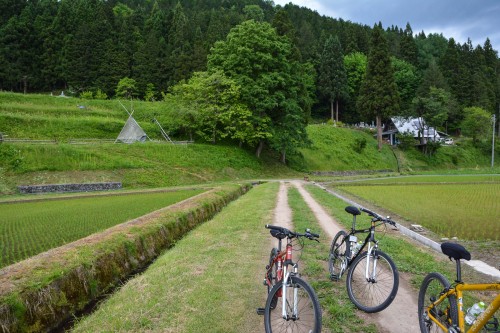
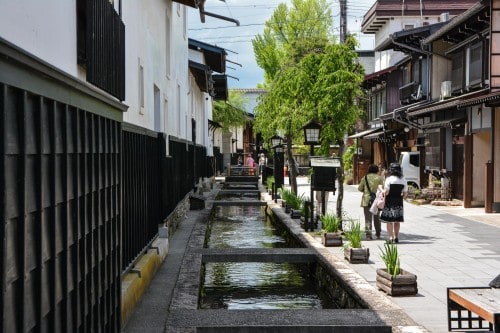
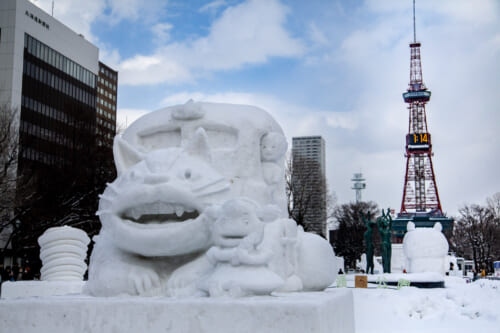
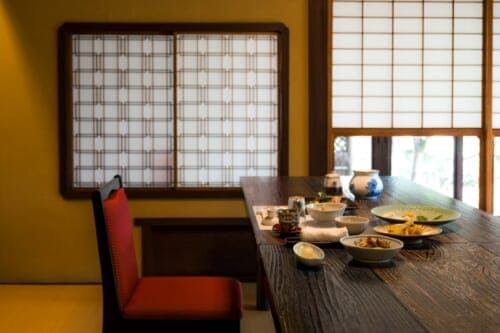
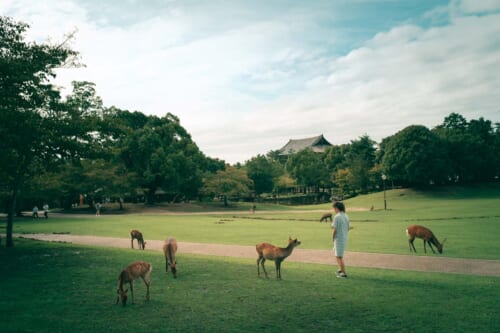
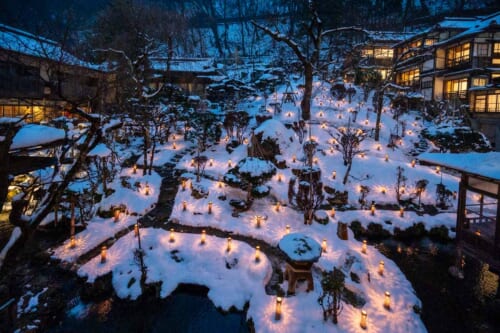
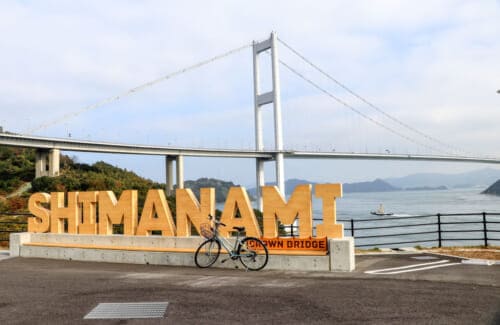
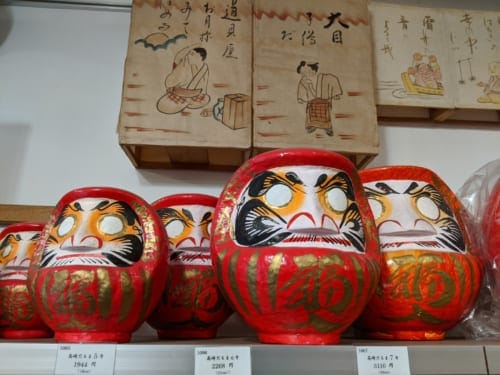
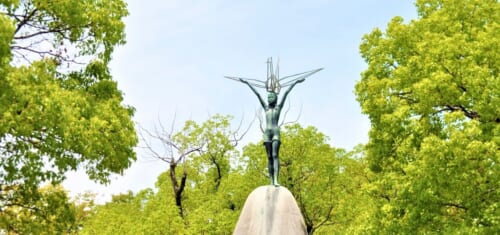


No Comments yet!